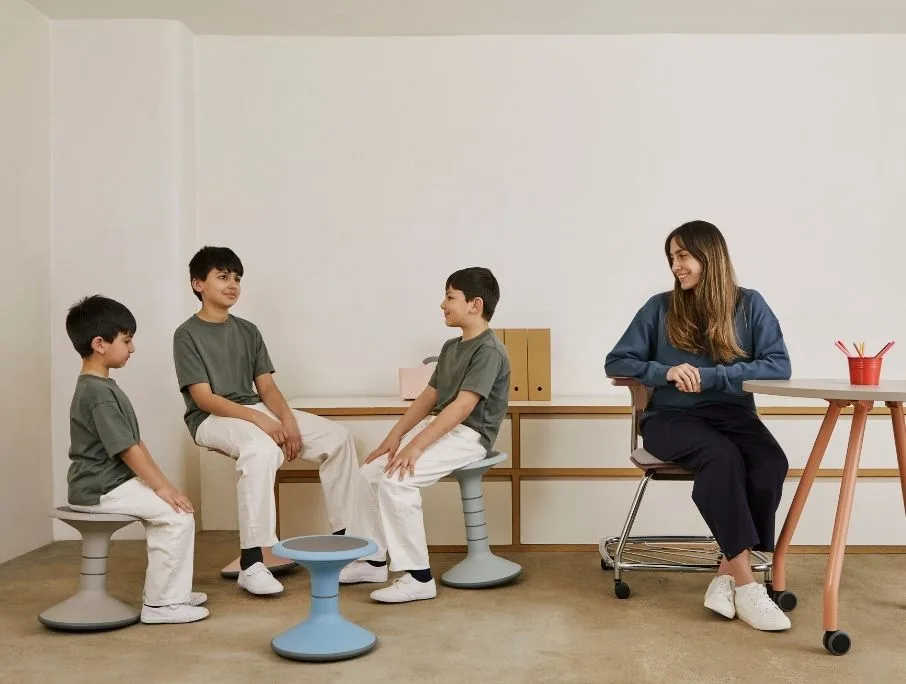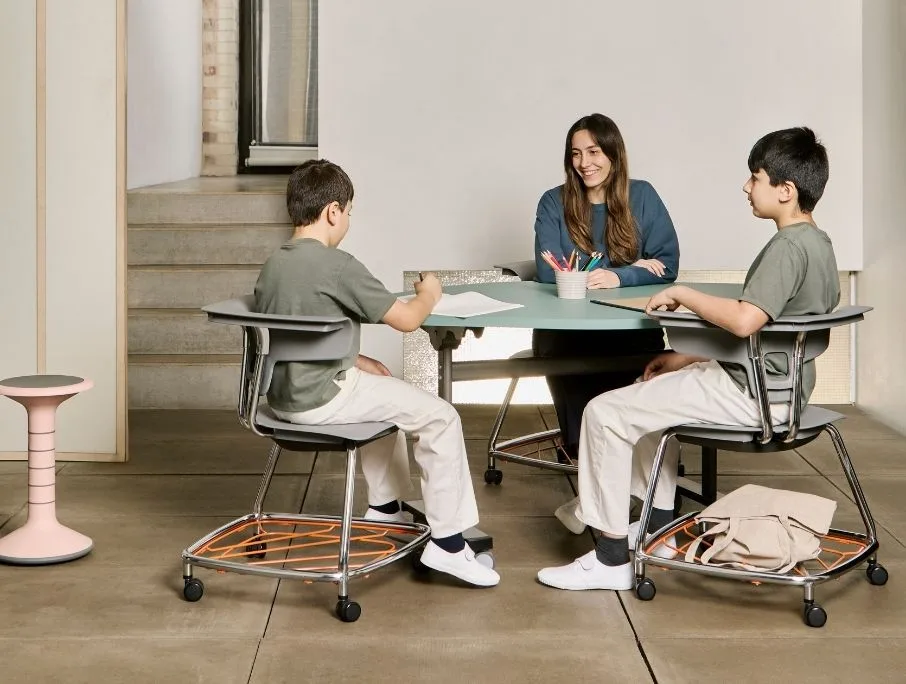Effective Classroom Design Ideas for an Engaging Learning Space
There’s more to modern classroom design than setting up rows of desks and chairs facing a whiteboard. Today’s classroom environment is a dynamic learning space to engage students and support diverse learning styles.
The right classroom design can significantly enhance both teaching effectiveness and student engagement. A University of Salford study showed that classroom design can impact student learning outcomes by as much as 25%. So it pays to put in the effort and creative thought behind good classroom organisation and decor.
Designing a good classroom space doesn’t have to be restricted to the start of the new school year. You could give the space a makeover when the kids come back to school after a break, or even after a weekend. If something isn’t working well in your classroom setup, change it.
Obviously, the classroom design and decor will vary greatly from a kindergarten to a high school classroom. You may not get such a positive reaction to a dinosaur themed classroom from a teenager as a 5 year old! That’s why it’s important to consider your students’ needs, the learning outcomes you want, and how you want to make the classroom feel.
Here, we’ll provide creative classroom design ideas to boost student engagement, improve focus, and create a welcoming learning environment
How do you want to make your classroom feel?

It sounds obvious that a classroom is a learning space. But your classroom design will affect a student’s headspace and their ability to learn. A well-considered classroom layout, along with creative decor, will benefit everyone in that learning space and will aid your classroom management.
A few aspects to think about when designing your learning space:
- Comfort: a classroom needs to feel welcoming and a safe space.
- Calm: don’t overload students’ senses. Use calming colours like blues, greens and earth tones to help students relax and focus.
- Inspiration: interesting visual displays can spark curiosity and enthusiasm for learning topics.
- Accessible: your classroom set up needs to cater for a diversity of learners and individual needs.
- Teamwork: classrooms need to facilitate both individual and group work. Ensure the room works as a collaborative space by providing flexible seating arrangements.
What is the best classroom setup?

What works for a Year 1 classroom, may not be the best classroom setup for a Year 8 group. But there are basic principles that apply, whatever the age group of students.
1. Support many types of learning
Flexibility is key in modern classroom design. It allows teachers to change things up to suit the learning activity. Modular furniture can be rearranged easily for collaborative group work, independent study, or teacher-led learning for the whole class.
Stackable chairs can be used to clear space for certain group activities. Lightweight chairs and desks are beneficial so that students can lift or move them easily without risk of injury. In addition, many students like to fidget and jiggle while they learn. Wobble stools are built for active sitting and encourage students to move while they learn.
2. Zone learning spaces
Create defined learning zones within the classroom to support specific activities. In primary schools, you could create a reading nook with comfortable seating (even beanbags or floor cushions) beside the classroom library. You may have a crafting zone for creative artwork and a sensory area for interactive play.
In older age groups, you may need collaboration spaces with soft seating and whiteboards, or task zones for STEM-focused learning for example. Task-specific zones encourage and empower students to engage with the learning activity.
3. Don’t forget teachers’ needs
You need more than a basic teacher desk area. Teachers have a tough job and it’s important to factor in their needs in your classroom design. By making the classroom environment work for teachers, it becomes easier for them to deliver effective and engaging lessons.
Adjustable chairs or stools are ideal. They can be raised or lowered to meet a student’s eye line, as well as to be the right height for the teacher desk. Chairs on wheels also allow for better mobility. And ergonomic chairs have myriad benefits for your wellbeing, including back and neck support.
4. Tidy up
Built-in or modular storage solutions are essential for classroom organisation. Clutter can be a major distraction. Make sure all resources have a place. Clear labels are helpful, especially when you want students to pack things away at the end of the activity. Efficient storage isn’t just for aesthetic appeal. It frees up floor space and allows students and teachers to move around the classroom easily.
Storage can vary from wall-mounted cabinets to bookshelves and lockers. And with digital tools now being integral to education (the chalkboard is long gone!), charging cabinets or device storage are crucial.
5. Bring in natural elements
Introducing natural elements to classroom design promotes a sense of calm and improves concentration. Studies have shown that classrooms with biophilic design aspects can improve student wellbeing and academic performance.
How to bring the outside in? You could simply add some greenery in the form of indoor plants (succulents and cacti are particularly popular right now). Maximise the natural light coming into the classroom – don’t obscure windows. Use natural, earth tones in your design.
Classroom decoration ideas

Giving a bare classroom a makeover can be fun. It’s a chance to unleash your creativity.
A themed classroom can reinforce a learning topic, inspire and engage students. One term your classroom theme could be Ancient Egypt and another it might be climate change. Just remember that heavily-decorated rooms tend to distract students and can impact their academic performance negatively. Don’t use every colour in the rainbow – it’ll cause sensory overload. Tone it down with more muted, calming tones.
Highlight student work in the classroom. It can instil pride in your students, as well as encouraging them to continue putting effort into their work. It’s also a way to show off their achievements and recent work to parents, other students and visitors to the classroom.
Your classroom wall displays and bulletin boards play a big part in making your classroom set up look exciting. You may include motivational quotes or inspirational facts and people. You can also use these display areas to reinforce rules and behavioural expectations – key aspects of classroom management. Stuck for inspiration? There’s a vast array of classroom display and bulletin board ideas on Pinterest, Twinkl and YouTube for starters.
Explore KI Furniture’s ranges for schools
Learning is central to our product design. We collaborate with, and learn from, our customers to ensure our products are practical, durable, and elegant. From primary schools to colleges and universities, our products improve numerous learning environments. Take a look at our case studies to see how educational institutions across the country have benefitted from using our classroom furniture.
